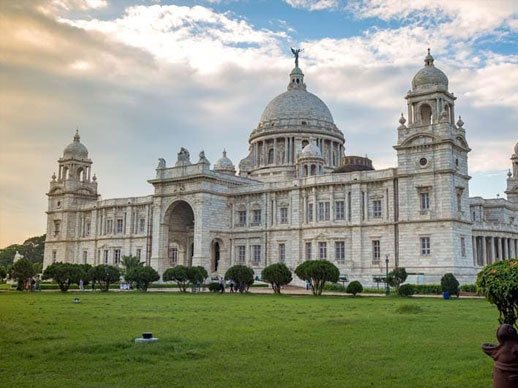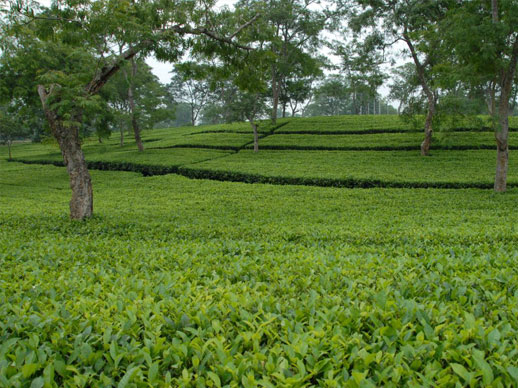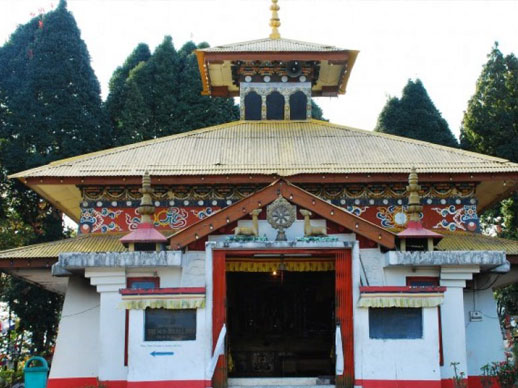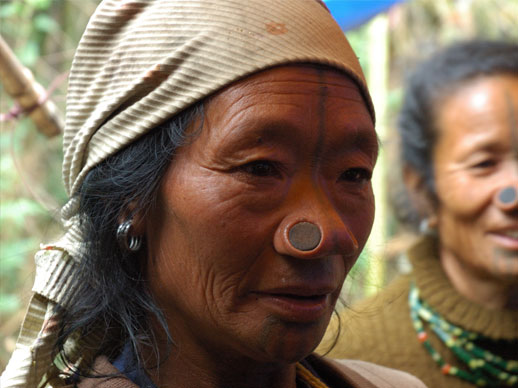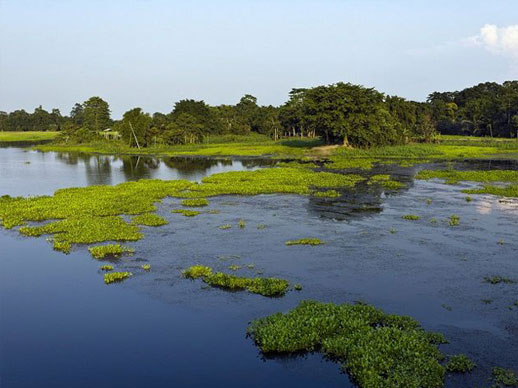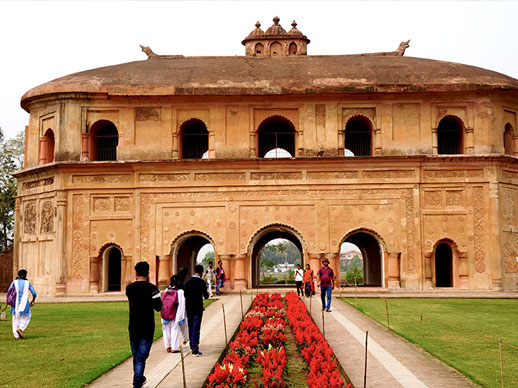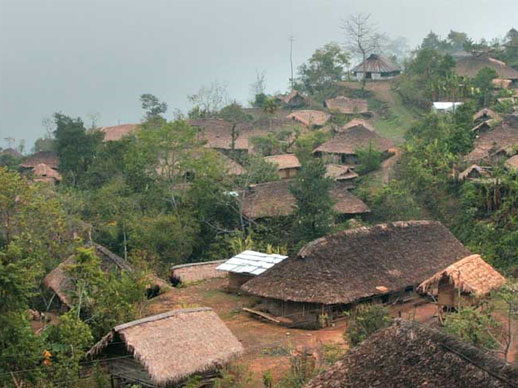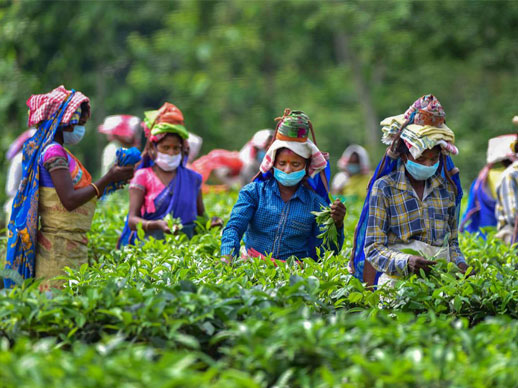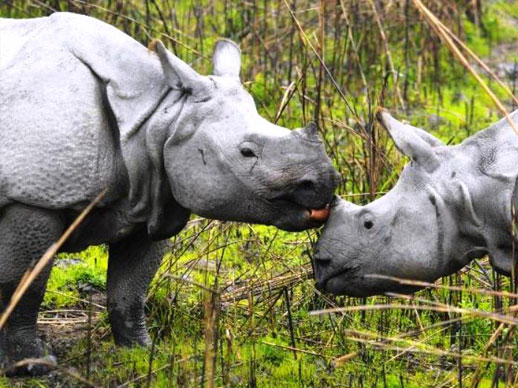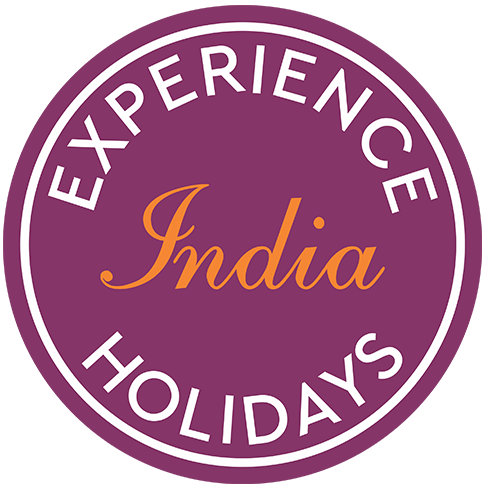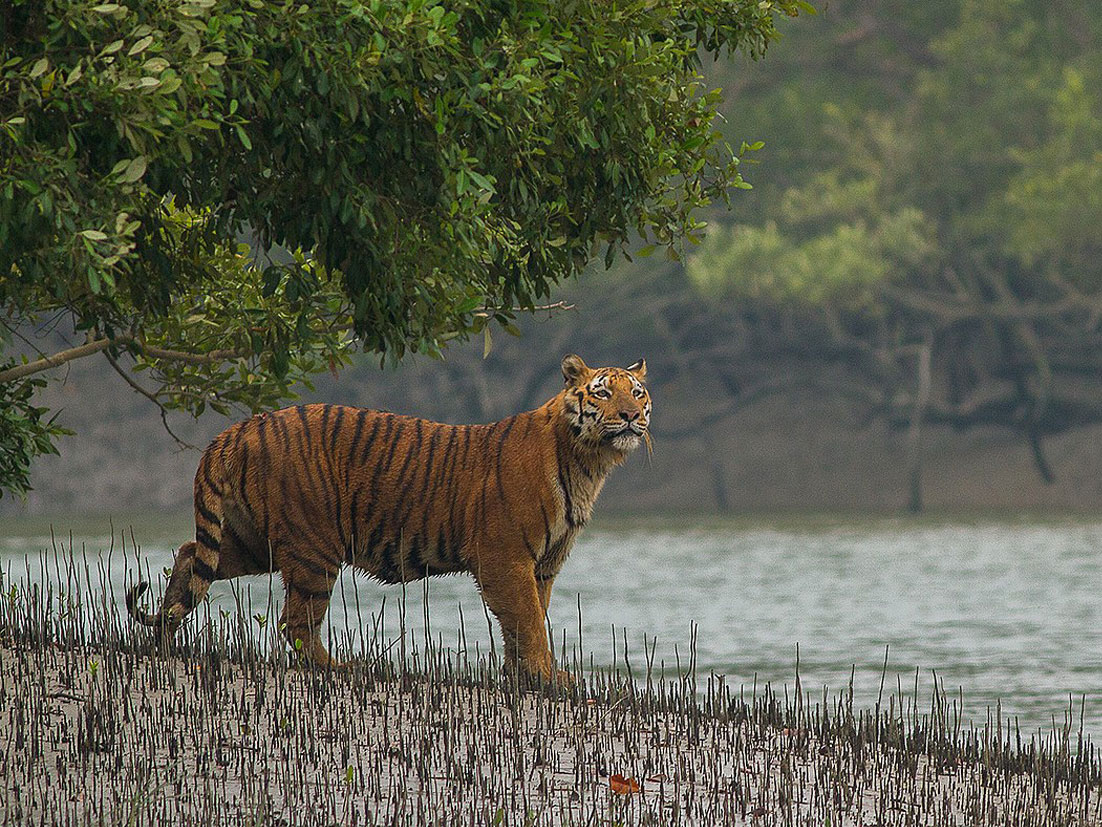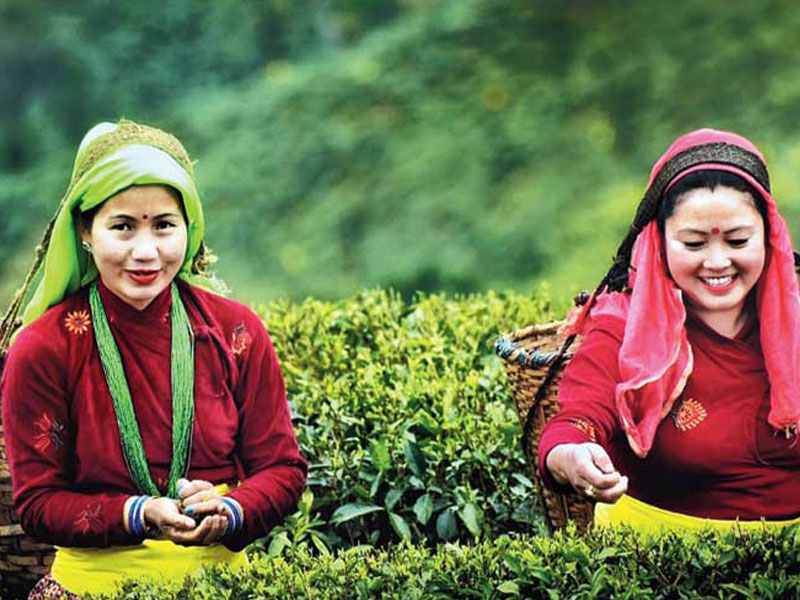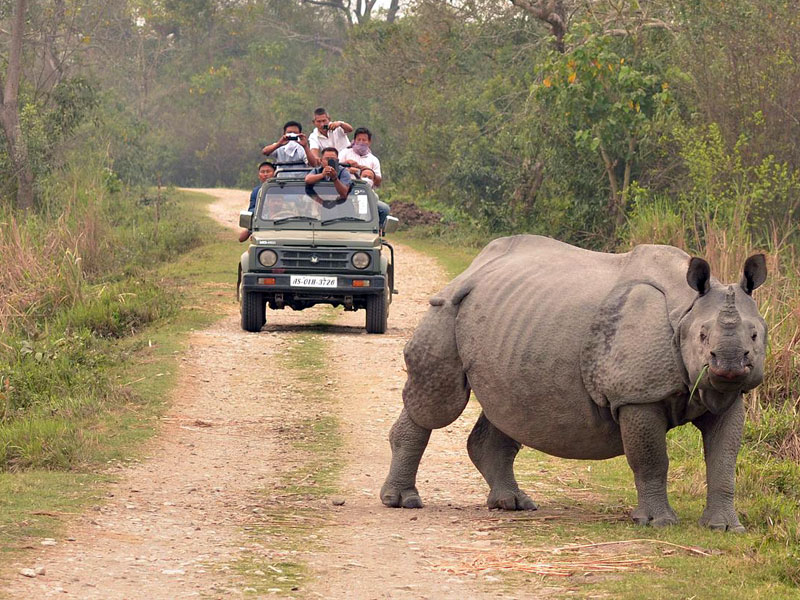
Tribals Of North Eastern India & Rhinos Of Kaziranga
Tribals Of North Eastern India & Rhinos Of Kaziranga
Duration: 15 Nigths / 16 Days
Destinations Covered
Kolkata - Tezpur - Itanagar - Ziro - Majuli Island - Sibsagar - Mon - Jorhat - Kaziranga - Kolkata
Overview:
This exploratory ‘off the beaten track’ tour takes you into the Northeast of India – a relatively unexplored and unspoilt part of India. We witness a fascinating Myoko or Boori Boot festival of Apatani tribes in Arunachal Pradesh. Best known for its eponymous tea, we explore Assam and see the Ahom ruins at Sibsagar and take a boat ride on the mighty Brahmaputra River to visit the Vaishnavite monasteries at Majuli, one of the largest riverine Islands in the world. The neighbouring Nagaland is home to many tribes, each with its own traditions, language and attire. There is an added attraction of Kaziranga – one of the finest national parks in India, famous for the one horned rhino.
Day 01
Arrive Kolkata
On arrival in Kolkata, you will be met by our representative and transferred to your hotel where you’ll stay for 2 nights. Just a short walk away is the new market which you can explore in your free time.
Day 02
Kolkata
A full day is spent exploring this charming metropolis, starting off with an early morning visit to the colourful flower market followed by a boat ride on the Hooghli River. The afternoon’s sightseeing includes the Victoria Memorial, St Paul’s Cathedral and the Indian Museum – one the largest museums in India.
Day 03
Kolkata – Guwahati - Tezpur
A short flight will take you to Guwahati – the capital of Assam. Drive to Tezpur for an overnight stay. Tezpur, also known as Sonitpur or City of Blood, is a ssociated with the legend of princess Usha, the daughter of King Bana and prince Anirudha, the grandson of Lord Krishna for their eternal love and romance. The great mythological war believed to have been fought between Hari (Lord Krishna) and Hara (Lord Shiva) and as a result the whole city was said to have been drenched in blood. We explore the city in the evening.
Day 04
Tezpur - Itanagar
Today we drive to Itanagar, the capital of Arunachal Pradesh – the land of rising sun. We stay here for the night. In the afternoon, we visit The Buddhist Gompa of Itanagar. This is a new but beautiful yellow – roofed shrine rising from well-maintained grounds behind which a Banyan tree planted by His Holiness The Dalai Lama. You get a beautiful view of the Itanagar city from the temple grounds.
Day 05
Itanagar - Ziro
Today morning, we drive to Jiro (usually spelled and pronounced as Ziro by the tourists). On the way to Ziro, we visit Local market run by Nyishi tribal women selling local produce of fruits and vegetables, handicrafts, jewellery and textiles. We also see Naharlagun – the Satellite city of Itanagar. We arrive Ziro in the evening and check-in at your hotel for an overnight stay. Situated in the Lower Subansiri district of Arunachal Pradesh, Jiro is the plateau of Apatani Tribe. There are currently no known written records of the history of the Apatani tribe, although it is speculated that, throughout their history, the Apatani had a democratic system of running the society. The village council was known as the Bulyang. They are of Tibetan origin; their language belongs to the Tibeto-Burman family. Most Apatanis are loyal followers of the Donyi-Polo faith, who pray to an array of spirits and souls for blessing. When a misfortune occurs, they believe that it is caused by certain spirits, and thus they make appeasement sacrifices of chickens and mithuns. The dress of the Apatanis is elaborate and colourful, yet simple in style. Tattooing and the stuffing of large nose plugs were once popular among the women. Originally, this practice started because the women wanted to look unattractive to males from neighbouring tribes!
Day 06
Ziro
Today we have a full day to explore the tribes. We can also plan the dates to coincide with Myoko festival – the biggest festival of Apatani tribe. This festival is celebrated to propitiate the Gods for good harvest and usually happens in late March. The first day and the last day of the festival is particularly interesting. The tour can also be planned around Boori Boot festival which happens in early February.
Day 07
Ziro – Majuli Island
Today we will undertake a longish drive to Bogibill ghat where we will take a public ferry to cross Brahmaputra River to reach Majuli Island. We stay here for two nights.
Day 08
Majuli Island
Majuli is the largest fresh water mid-river deltoid island in the world. It is situated in the upper reaches of Brahmaputra River in Assam. With a population of about 160 thousand, majority of them tribal, Majuli is endowed with rich heritage and has been the abode of the neo-Vaishnavite culture. The island is a bio-diversity hotspot and has rich ecology with rare species of flora and fauna. We have the full day to visit various satras. The most notable are Samuguri Satra, famous for mask making; Uttar Kamalabari, the oldest Satra and Unauiti Satra, the biggest Satra. We also visit the Missing tribal village.
Day 09
Majuli - Sibsagar
Today morning, we will take a ferry out of Majuli Island to Nimatighat. You will then drive to Sibsagar. Sibsagar was the capital of the Ahom rulers from 1228 to 1826. Sibsagar got its present name from Sibsagar tank, excavated by the Ahom queen Ambika. The tank was named after her husband, Shiva Singha. Sibsagar tank is also known as Borpukhuri, meaning a big lake. Shiva Dol, Vishnu Dol and Devi Dol are the three temples on the banks of Sibsagar. We stay in Sibsagar for the night and visit the Talatal Ghar and Rang Ghar – the Royal Observatory along with Sibsagar tank and temples around it.
Day 10
Sibsagar - Mon
Today we will drive to Mon. The drive is through pristine tea gardens. We stay in Mon for two nights.
Day 11
Mon
Today we will visit the tribal villages around Mon. We drive to Longwa village, close to Myanmar border. Longwa is one of the biggest villages in the region with some portion of the village lying in India and some in Myanmar. The village is controlled by a chief called as “Angh”. Half of the house of the chief falls in India and the other half in Myanmar. The villagers have dual citizenships of India and Myanmar! We will visit the village and learn about their culture. The tribe is skilled in making exquisite handicrafts. In the afternoon, we will visit another tribal village of Hongpoi Village. This tribe is called Konyaks and have peculiar tattoos.
Day 12
Mon - Jorhat
Today we will drive to Jorhat. It was the last capital of the Ahom Kingdom and home to many historical monuments of Assamese culture. Jorhat is renowned for tea production and has one of the largest tea research centres in India. We spent the night in a tea planter’s bungalow.
Day 13
Jorhat - Kaziranga
Today we drive to famous Kaziranga national park. A famous reserve on the banks of the Brahmaputra, Kaziranga National Park is home to the one-horned rhino. Also, to be found in the swamps and tall grass are buffalo, swamp deer, hog deer, tiger and wild elephant. We will begin our jungle experience with an afternoon safari in the park.
Day 14
Kaziranga
Another day is spent exploring the park. We will enjoy morning and afternoon game drives in the park. There is an option to do elephant safari in the morning.
Day 15
Kaziranga – Guwahati - Kolkata
Today we will drive to Guwahati airport for the short flight back to Kolkata where we stay for the night.
Day 16
Transfer to Kolkata Airport
Like all good things, your tour in India comes to an end but you will always carry with you, memories of this unique and unforgettable holiday experience. In goodtime you will be transferred to Kolkata International Airport to connect your flight home.
